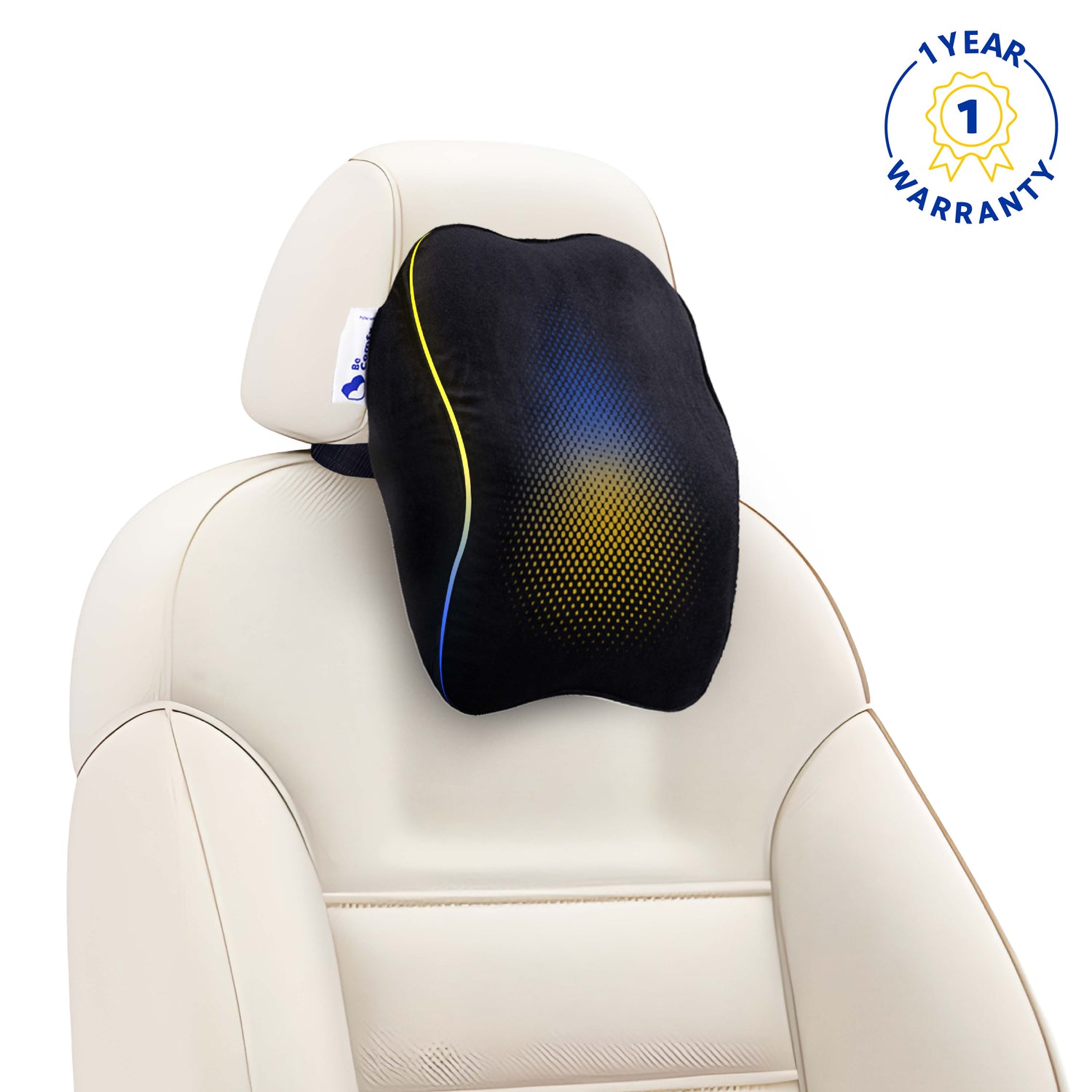Office Chair Ergonomics 101: Setting Up Your Workspace for Back Pain Relief in India
Share
Long hours at the desk are a reality for many professionals across India. Whether you're in a bustling corporate office, an IT hub, or working from home, prolonged sitting often comes with an unwelcome side effect: back pain. In fact, studies indicate that a staggering percentage of India's workforce, potentially over 65%, experiences back discomfort, largely due to sedentary jobs and suboptimal workspace setups. Some research focusing specifically on Indian IT professionals found Low Back Pain (LBP) prevalence to be around 51%. The constant ache, stiffness, and potential for long-term issues can significantly impact productivity and overall well-being.
The good news? You don't have to resign yourself to discomfort. By applying basic principles of office chair ergonomics, you can transform your workspace into a zone of comfort and support, significantly reducing the risk and impact of back pain. Ergonomics is essentially about fitting your workspace to you, minimizing physical strain. Let's break down the essentials for setting up your workstation correctly, tailored for the Indian context.
Adjusting Your Office Chair: The First Step to Comfort
Your chair is the foundation of an ergonomic setup. Simply having a chair isn't enough; it needs to be adjusted to support your body correctly. Here’s how:
-
Set the Right Height: Adjust your chair so your feet rest flat on the floor, with your knees level with or slightly lower than your hips. This position helps maintain the natural curve of your lower back and reduces pressure. If your feet don't reach the floor comfortably after adjusting for desk height, use a footrest. A stack of sturdy books can work in a pinch for home setups.
-
Check Seat Depth: Sit back fully in your chair. There should be a small gap, roughly 2-3 fingers wide, between the front edge of the seat and the back of your knees. If the seat is too deep, it can press against your knees; too shallow, and it won't support your thighs adequately.
- Prioritize Lumbar Support: Your lower back has a natural inward curve (lordosis) that needs support. Adjust your chair's backrest or lumbar support feature to fit snugly into this curve. Proper lumbar support helps maintain this natural 'S' shape, preventing strain and the tendency to slouch.
- What if your chair lacks support? Many standard office chairs, especially in varied Indian work environments, don't offer adequate built-in lumbar support. In such cases, adding an ergonomic back support cushion, like the BeComfy Back Support for Chair, is crucial. Its contoured memory foam design provides targeted support to maintain spinal alignment and relieve pressure during long sitting hours.
- Position Armrests Correctly: Adjust armrests so your shoulders are relaxed, and your elbows rest comfortably at roughly a 90-degree angle, close to your body. Armrests that are too high force you to shrug, while too low encourages leaning.
Arranging Your Desk and Monitor for Optimal Posture
Once your chair is set, turn your attention to your desk and screen:
-
Desk Height Matters: Your desk should allow you to type with your wrists straight, forearms roughly parallel to the floor, and elbows bent at about 90 degrees. If your desk is too high, raise your chair and use a footrest. If it's too low, consider placing sturdy blocks under the desk legs. Ensure there's enough clearance under the desk for your knees and thighs.
-
Monitor Placement is Key: Position your monitor directly in front of you, about an arm's length away. The top of the screen should be at or slightly below your eye level. This helps prevent neck strain from looking up or down for extended periods. If you wear bifocals, you might need to lower the monitor slightly more. Position the monitor to avoid glare from windows or overhead lights.
- Keyboard and Mouse Positioning: Place your keyboard and mouse close to you on the same surface, allowing your upper arms to stay close to your body and wrists to remain straight. Avoid reaching. Keep frequently used items like your phone or stapler within easy reach to minimize stretching.
Beyond Setup: Cultivating Healthy Work Habits
An ergonomic setup is crucial, but so are your habits:
-
Maintain Good Posture: Consciously sit up straight, keeping your head balanced over your shoulders and your shoulders aligned over your hips. Avoid slouching or hunching forward, which flattens your natural spinal curve and increases strain.
-
Move Regularly: Prolonged static postures, even good ones, increase muscle fatigue and stiffness. Set reminders to take short breaks every 30-60 minutes. Stand up, stretch, walk around. Simple desk stretches can also help alleviate tension.
- Listen to Your Body: Pay attention to any aches or pains. Discomfort is a sign that something in your setup or habits needs adjustment.
Conclusion: Invest in Your Comfort and Health
Setting up an ergonomic workspace doesn't require expensive equipment, but it does require attention to detail. By adjusting your chair correctly, positioning your desk and monitor thoughtfully, and cultivating habits of good posture and regular movement, you can significantly reduce the burden of back pain that affects so many in India.
These simple adjustments can lead to greater comfort, improved focus, increased productivity , and better long-term spinal health. For an extra layer of support, especially if your current chair falls short, consider ergonomic accessories. A quality cushion like the BeComfy Back Support can make a noticeable difference in maintaining posture and easing discomfort throughout your long workday. Take the time today to assess your workspace – your back will thank you for it!

